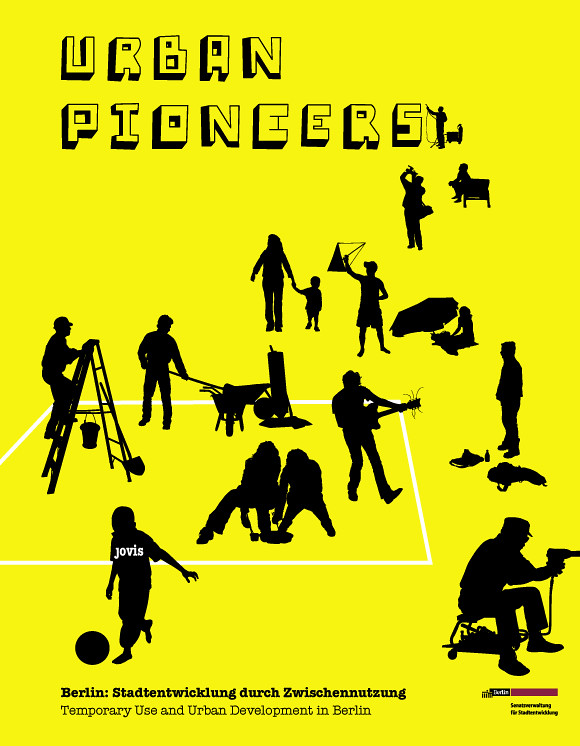Book – Urban Pioneers
Cities are in constant transformation with building stock constantly changing. It is a renewal process from within that is loosely guided by urban planning regulation and sometimes through a masterplan or planning vision. This process is paced at a slow cycle compared to everyday buzz, but can have a rather fast turnaround if one is at a distance.
Reasons are various, but include material lifecycle and shift in activity and economics as well as trends and fashion to some extend. Most likely it is all of this and a couple more all at once. However the transformation is, even though repetitive, not a back to back replacement of physical form and neither is it a like for like exchange.
The dynamics of urban renewal can include long term decay, derelict elements, brown fields, building sites and so on. There can be rather long periods of slow or non development where the area is not actively contributing to the wealth generating, money making economy of the trend areas of the city.
Nevertheless, these areas might have a value and are still space, a scarce resource in the urban context. With this such places can become very valuable places for specific activities and society groups. At low or no cost urban places can be taken over and used for individual ideas a concept very often built on a temporary or opportunity concept of usage.

Image taken from null-euro-urbanismus / The project Neuland was initiated by the planning department and focuses on making empty spaces accessible and usable by the local public.
In various cities these mechanisms of transformation have been turned into partly institutionalised processes with officials having recognised the value and power of mainly cultural and social themed temporary uses of vacant urban spaces. A number of cities across Europe and America are picking up on it with Vienna (partly discussed earlier HERE and HERE) and Berlin being pretty pro active.
Jovis Publisher has in 2007 published a summary of projects and discussions around the topic with a focus on Berlin. The publication Urban Pioneers: Berlin Experience with Temporary Urbanism edited by the city of Berlin, the Senatsverwaltng fuer Stadtentwicklung directly has now been reprinted in 2011 and is available again.
The publication features projects around temporary usage of vacant sites, portraits concepts of space occupation and the reclaim of urban territory lost to barriers, hoardings and borded up windows. The origin of these spaces in the publication is described as mainly down to changes in the economy, with older industries disappearing, the developing of new production and logistics systems including technology and supply. Also demographic change is discussed in the publication as a factor.
The projects presented range from gardening, often guerilla gardening to golf and alternative housing projects in trailers and tents. There are also skaterparks, openair theaters bars and accessible green spaces as well as cultural venues, local centres and educational institutions that found a home in reclaimed properties.
One of the very first and very public projects was the Badeschiff (Bathing Ship) in 2005. It is a wooden platform leading to a floating pool in the river Spree. It has become very popular with locals as well as tourists and is a model that is in use in various other cities too. A few sample pages are available form HERE.

Image taken from slowtravelberlin.com / The Berlin Bathing Ship in the Spree in summer. In winter the bath is covered with a tent structure and turned into a sauna and relax world.
The publication details these projects in depth with not only a mere description but a presentation and discussion of the technical aspects, such as development timeframe, initiative, the role of the local authority, ownership, the legal framework and financing models. There is for each project as a description of the main hurdles and conflicting interest. With this the publication manages to lift the discussion form the mere wow a cool, trendy project to a proper discussion of urban space usage, urban redevelopment as well as local initiatives and bottom up planning and discurse. As such it can be a handbook for both planners and initiatives lead by local groups or even individuals.
For once urban spaces are not just to be used, but to be shaped, programmed and activated by the public that is you.

Image taken from Jovis / Book cover
Senatsverwaltung fuer Stadtentwicklung ed., 2007. Urban Pioneers: Berlin Experience with Temporary Urbanism. Bilingual, reprint 2011, Berlin: Jovis.
